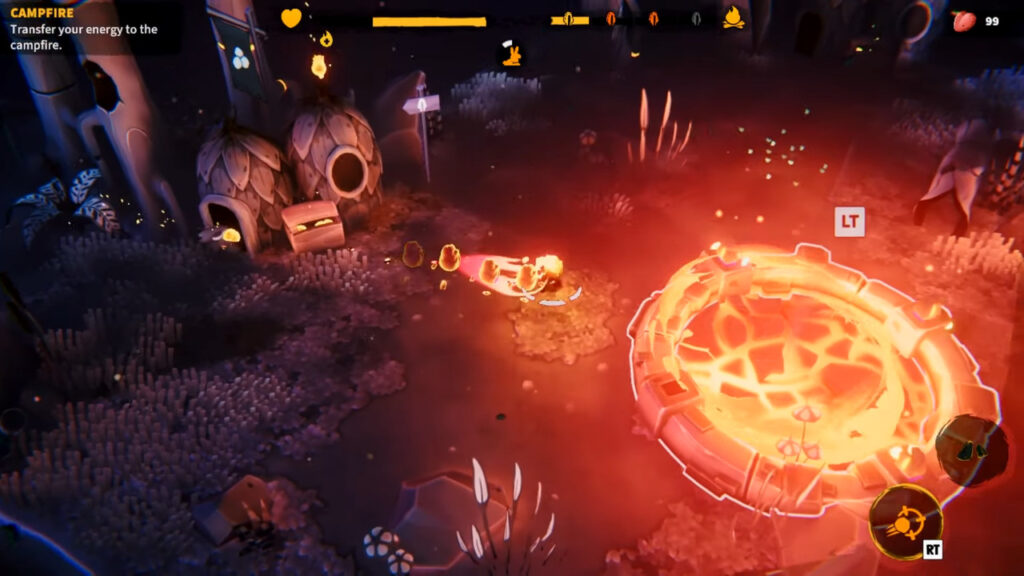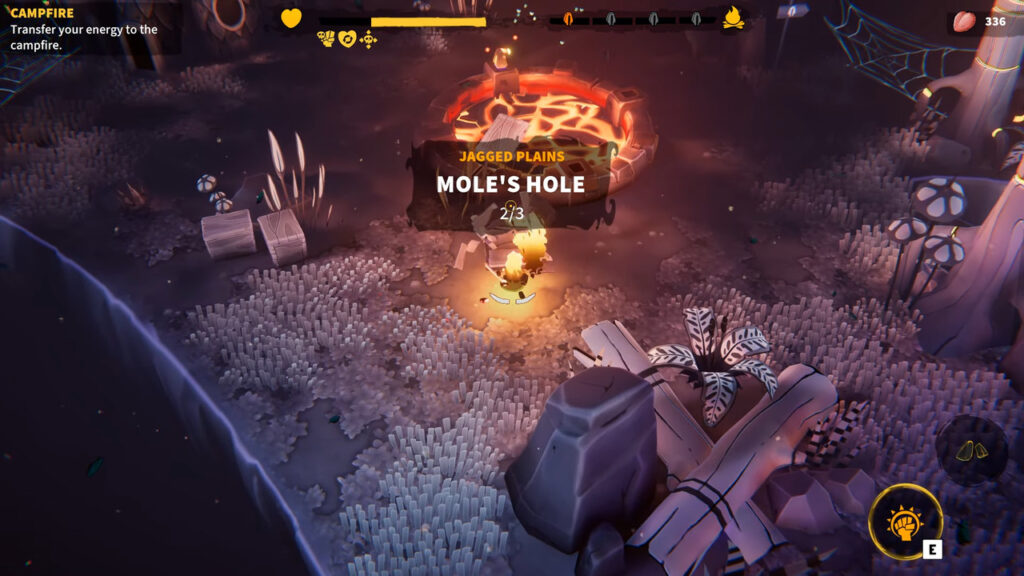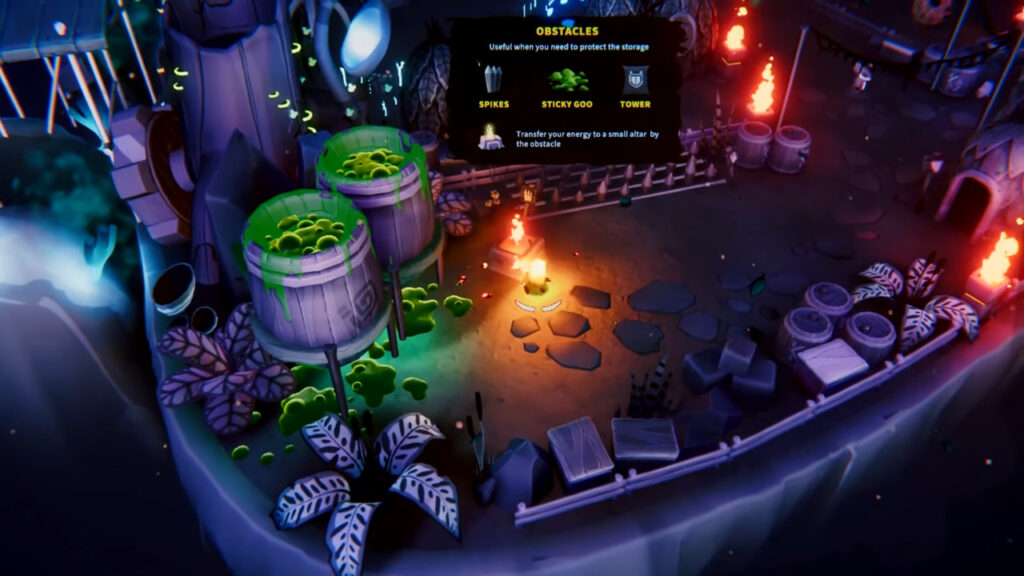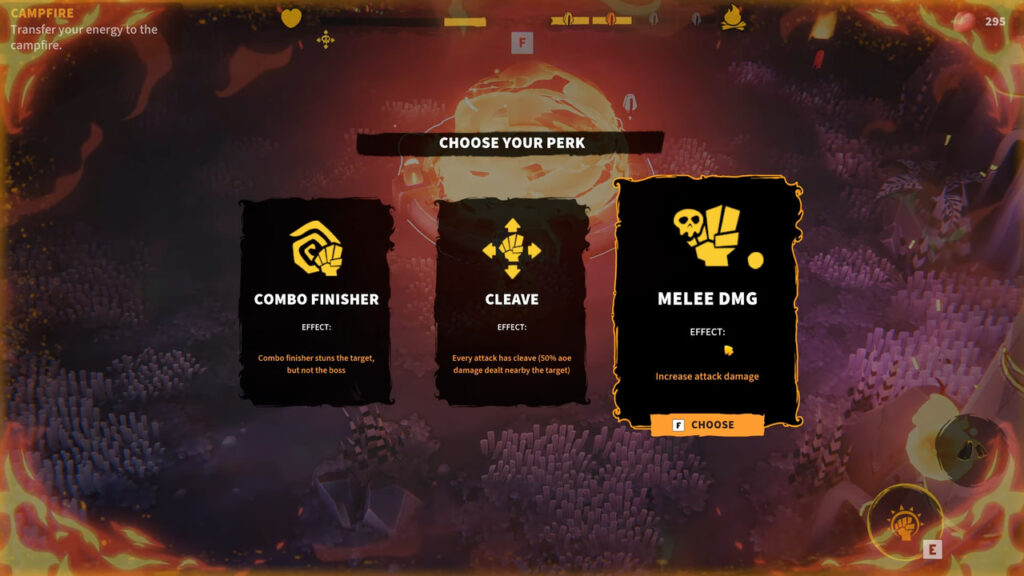
Developer: Kautki Cave
Publisher: Untold Tales
Platform: Switch, PC, PS4, PS5, Xbox One, Xbox Series X|S
Tested on: PC
Flame Keeper – Review
We’re still figuring out what the threshold is for a backlog review, e.g. a review of a game that has been out for a while. In the case of Flame Keeper, the subject of today’s review, we’re looking at a title that has been out for a month or two. Or at least, that has been out in 1.0 since then, as Flame Keeper has done quite a lot of mileage in Early Access. Whether or not this is a backlog review aside, was Flame Keeper able to turn up the heat or did the game fizzle out once we got to grips with it?
Story
Our story centers around the titular Flame Keeper, a fire creature named Ignis. He’s the protector of Vulpius Village, tasked with keeping its inhabitants safe from the Pixies. These are creatures of darkness, and in order to defeat them once and for all, Ignis needs to restore the Eternal Flame to its former glory. In a nutshell, that’s the entirety of Flame Keeper’s plot. Granted, some lovely world-building is going on here to make the world of Orbis feel alive. The villagers that Ignis protects are adorable, and the village elder does a good job as a vessel to deliver lore to the players, but ultimately, this isn’t a game that puts a heavy emphasis on its narrative.
Graphics
Given the theme of fire fighting against darkness, it makes sense that Flame Keeper’s visuals put a lot of emphasis on lighting. The juxtaposition of light and shadow works a lot better here than it did in Guayota, a title we recently reviewed with a similar visual design philosophy. Character designs are more elaborate than those of Guayota, with enemies in particular being striking in appearance. The cutesy art style doesn’t always fit with the narrative, but it definitely looks appealing. The game’s performance is also great, with no noticeable frame rate issues or other hiccups.
Sound
Like many other games, Flame Keeper’s voice work inhabits the middle ground between full-on voice acting and outright silence, by making the characters talk in gibberish. Combined with the slithering sounds of the Pixies, this makes for a distinct and easily identifiable soundscape that fits perfectly with the overall atmosphere. Rounding things out is a surprisingly upbeat soundtrack. While the music isn’t particularly memorable, it does tie everything together nicely.
Gameplay
Although Flame Keeper incorporates some tower defense (well, base defense) elements in its gameplay, this is a roguelite title at its core. Taking control of Ignis, your task in each of the game’s randomly generated levels is to find the lanterns scattered throughout the vicinity. These need to be brought back to the campfire in your base. Each lantern you successfully collect and light up provides Ignis with an upgrade. The caveat here is that lighting a lantern also brings a new wave of enemies to the stage. Ignis can only carry one lantern at a time, so carefully strategizing which lanterns to collect first is often essential to successfully completing a run, lest you get overwhelmed. In addition to lanterns, the levels also hold traps, which you’ll have to avoid, and runes, which act as keys to treasure chests. As you can imagine, there is a whole lot of backtracking going on here but given that the individual levels aren’t overly long, this shouldn’t affect your enjoyment of the game.
Ignis starts out with the expected basic skillset: he can jump, dash, and perform a basic punch attack. Eventually, he’ll expand his core arsenal with a heavy punch and a stomp attack as well. These basics are supplemented with breakable weapons, randomized abilities, and special attacks that require scrolls. There is more to being successful in Flame Keeper than just combat prowess, however. You’ll constantly need to keep an eye on both your health and your stamina. Health management in particular is tricky: while additional health is relatively easy to come by, you’ll need to sacrifice part of your health pool every time you take specific actions, including lighting up a lantern or opening a chest. You’re the embodiment of fire after all. Likewise, all of your move actions, including jumping and dashing require stamina. Flame Keeper is more forgiving than most other roguelites, but this resource management aspect makes it so that this one definitely isn’t just a walk in the park.
After successfully returning and lighting all of the lanterns in a stage, the gameplay shifts to the tower defense elements we mentioned earlier. Hordes of enemies will attack the base, and you’ll need to defend the campfire from these. Of course, you can’t defend multiple fronts at once all by yourself, so you’ll need to rely on traps. These are placed in predetermined locations, so you’ll still be running around frantically as you fend off the attackers. The defense challenges are built around a timer, and as soon as that runs out, you’ll claim victory. At the end of each of the game’s different biomes, you’ll face a boss battle instead. Both end-of-level challenges make for a nice change of pace compared to the main roguelite gameplay.
Between the levels, you’ll return to the village, where you’ll purchase permanent upgrades for our hero, as opposed to the randomized skills you pick up during runs, which only last until the end of a level. You can also upgrade camp defenses, making the tower defense segments more manageable. We appreciate the effort that went into making what is essentially a series of menus feel alive thanks to the village setting. Of course, upgrading things comes at a price, and you’ll be replaying levels over and over to grind out more resources. This is something that is inherent to the genre, of course, and Flame Keeper doesn’t feel like it relies on difficulty spikes to pad out the game’s length.
Speaking of length, you’re looking at around 8 to 10 hours to complete this one. If you’re looking at acquiring absolutely every upgrade, then maybe you can squeeze an additional hour or two out of it. The game doesn’t overstay its welcome, and we feel that this is nicely reflected in its €11.99 RRP. Add to this that our experience with Flame Keeper was buttery smooth, both in terms of performance and controls, and you’re ending up with a decent little roguelite.
Conclusion
Although Flame Keeper’s core roguelite gameplay keeps things simple, a couple of cleverly implemented ideas keep players on their toes, such as health and stamina management. The tower defense mechanics add a fresh twist to the classic roguelite formula. We do feel like Flame Keeper’s narrative could have been fleshed out, but apart from that, there is a lot to like in this cute little adventure.










No Comments